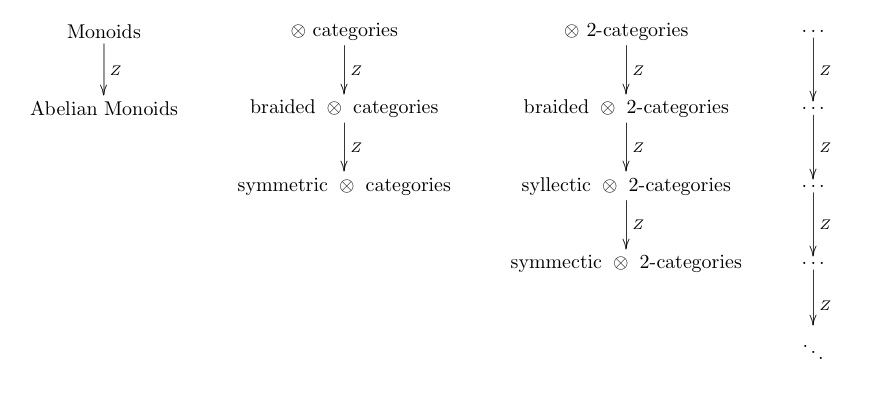Two Berkeley grad students, Pablo Solis and Andrew Critch, just organised a “20 questions seminar”. The premise is pretty simple — everyone gets 2 minutes to ask a question they’d like an answer to, and we spend any remaining time (and tea afterwards) talking about them.
I wasn’t sure beforehand whether or not it was going to work out, but ended up pretty pleased I came. We didn’t quite make it to 20 questions (13 that I counted); they appear below. There’s also apparently going to be a wiki page for the seminar. The questions range from easy to weird to awesome. I left out one or two for various reasons, and my apologies for the lame TeX. Decide for yourself which you like, and feel free to give answers — if there’s good discussion here I’ll advertise that at next week’s “20 questions”.
1 Scott:
in R^2, you can tile the plane with hexagons. However any closed trivalent graph has a face that’s smaller than a hexagon. You can tile R^3 with vertex-truncated octahedrons. Say we have a “generic” closed finite cell-complex (every edge has 3 incident faces, every vertex has 4 incident edges). Is there something “smaller” than a vertex-truncated octahedron (or the other polytopes that give generic tilings)?
2 Critch:
Is there a space with trivial homology, non trivial homotopy?
(Anton: isn’t there a result that say that first nontrivial homology and homotopy agree?)
4 Yael:
Out(G) = Aut(G)/Inn(G). Is there a nice description of cosets, beyond that they’re cosets?
5 Mike:
X a banach space, f:X->R convex.
If X is infinite dimenionsal, what extra conditions guarantee that f is continuous?
6 Darsh:
Take a triangle in R^2 with coordinates at rational points. Can we find the smallest denominator point in the interior? (Take the lcm of the denominators of the coordinates.)
(Hint: you can do the 1-d version using continued fractions.)
7 Jakob
Take a “sparse” (every vertex has reasonably small degree) graph. Consider a maximal independent set for the graph (a maximal set of disconnected vertices). Can we make a new graph, with vertices the set, and whatever edges we like, that is as topologically similar to the original graph as possible?
8 Andrew:
What’s the deal with algebraic geometry? Just kidding!
Consider the sequence x0=0, x1=1, x_{n+2} = a x_{n+1} + b x_n, generalizing the Fibonacci sequence. Fix p a prime. If k is minimal so p|x_k and p|x_l implies k|l, then v_p(x_nk) = v_p(x_k) + v_p(n). (Here v_p(z) is the power of p dividing z.) Is there some framework that makes this sort of result obvious? Andrew only knows strange proofs.
9 Anton:
Take I=[0,1), the half open interval. Do there exist topological spaces X and Y, with X and Y not homeomorphic, but XxI and YxI are homeomorphic?
E.g., if instead I=[0,1], the closed interval, you can take X=mickey mouse=disc with two discs removed, Y=cross-eyed frog=disk with two linked bands glued on the boundary.
10 Pablo:
x^x^x^x … converges if x \in [e^{-1}, e^{1/e}], e.g. with x=\sqrt{2}, this converges to 2. Given a sequence (a_i), when does the “power tower sequence” converge?
13 Andrew again:
Can you define the set of all primes with a first-order theory?
Given a first-order theory, let S(T)={|M| | M is a finite model of T}.
You can get all prime powers with the field axioms. Is there some T so S(T)={primes}.
14 Yuhao:
Let A be an abelian category, that might not have enough injectives? Can you embed into another abelian category with enough injectives? Is there a universal way?
e.g. finite abelian groups embeds into Z-modules
e.g. coherent sheaves embeds into quasi-coherent sheaves
(Anton: the Freyd embedding theorem says every abelian category embeds in Z-mod. But this doesn’t help universality.)






